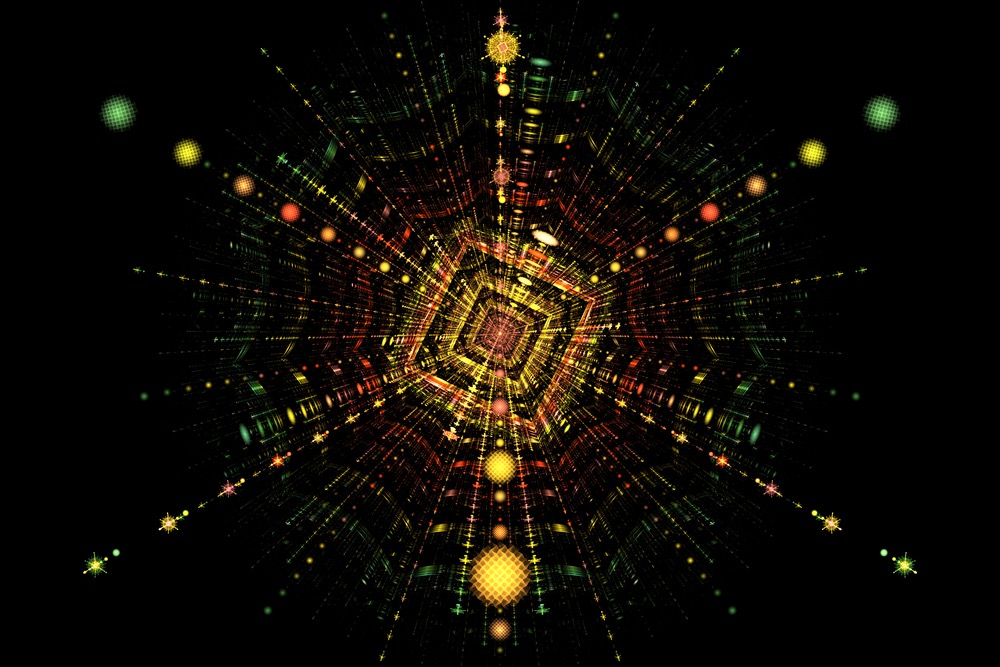New Particle May Hide in Old Atom-Smasher Data

A study of some old data from a 1990s-era particle-accelerator experiment could be a hint at new physics. Or it could be a fluke.
From 1989 to 2000, the European Organization for Nuclear Research (CERN) operated an atom smasher called the Large Electron-Positron Collider (LEP), in which particles were sent crashing into one another at near light speed. Arno Heister, a scientist at CERN, on his own time, decided to look at some data produced between 1992 and 1995 in one of the detectors in the LEP, called ALEPH. These detectors record what happens during those high-speed collisions, when energy — sometimes in the form of exotic particles — comes spewing out.
Although not as powerful as the Large Hadron Collider (LHC) atom smasher that's in use today, the LEP made some important discoveries, such as finding the mass of the W boson, the particle that carries the weak nuclear force. LEP was dismantled in 2000 to make way for the LHC. [The 9 Biggest Unsolved Mysteries in Physics]
Data bump
The data came from studies of the Z boson — a particle produced when an electron collides with its antimatter counterpart, a positron. The Z bosons then decay into other particles, and sometimes, they produce muons and antimuons. Muons are like electrons, but heavier, and last only microseconds before they change into an electron and two neutrinos.
When the original LEP experiments were done, the muons were produced in particle collisions (also called "events") that occurred at certain energies. A graph of particle mass (expressed as energy, per Einstein's famous E = mc^2) against the number of events per billion electron volts, or GeV, shows a peak at about 10 to 15 GeV and a long "tail" that trails off pretty smoothly to near zero. Given the known physics, Heister said, that's what physicists would expect to see — that is, if no new particles popped up.
However, he found that the graph showed a "bump" at about 30 GeV. If it is real, it means that some mystery particle must have about that amount of mass (expressed as energy), Heister said. "I found some rare cases, with some statistical significance, that there is something happening we don't expect," Heister told Live Science.
Such a bump is showing more muon-antimuon pairs than theory (and previous observations) can account for. That's why it's tantalizing — it could be showing a new particle. [Beyond Higgs: 5 Other Particles That May Lurk in the Universe]
Sign up for the Live Science daily newsletter now
Get the world’s most fascinating discoveries delivered straight to your inbox.
New particle or statistical fluke?
But even Heister said to hold off on the excitement, as there are three possibilities for the unaccounted-for bump.
The first is a simple statistical fluctuation. Such mirages have appeared before, as in December 2015, when the LHC seemed to show a similar bump at 750 GeV. Rather than a hint of a particle that was new to science, that bump turned out to be an illusion; closer examination showed there was no real bump.
The second possibility is that it's some phenomenon that fits in the Standard Model (the model that governs particle physics) but hasn't been observed before. "Perhaps there is something in the Standard Model we don't understand," Heister said.
The third possibility is something nobody has seen before, some kind of new particle or interaction.
That last possibility is the least likely, Matt Strassler, a particle physicist who is not currently affiliated with a university or institution and was not involved in Heister's work, said in an email to Live Science. "The hump is probably nothing; the hump is too wide and comes from events that do look too much like Z bosons decaying into bottom quarks and anti-bottom quarks." (Quarks are one possible way Z bosons decay, and in fact, that's what they turn into most of the time.)
Even so, that doesn't mean that scientists shouldn't look at older data like this for new results, he noted. "I'd only say that old data can show new things if you ask new questions that the old experiments, and newer experiments, haven't already answered," Strassler said.
Strassler added that there is a current emphasis in particle physics on pushing to ever-higher energies (sending particles zooming at one another at faster and faster speeds), because most physicists think new particles would be heavy (and thus require more energy to produce).
That's not a bad strategy — it has yielded findings such as the Higgs boson and the W and Z particles. But it isn't the only way to do the science. "The particles may be there, waiting to be discovered," Strassler said. "It's just how you choose to analyze your data. If you don't look for hidden valley physics directly, you may simply miss it."
There are other reasons for a little pessimism: Experiments at the LHC didn't show any bumps at a similar energy. But Strassler noted on his blog that if particles decay in a certain way, the LHC wouldn't necessarily see what Heister said he found. Even if the chances are small, though, Strassler said it is important to look.
Meanwhile, Heister said he wants the physics community to look at his results, which he posted on arXiv, a preprint server for physics research. "I would like to find out from the community," he said. "I am an experimentalist, and I'd like to find out what this is."
Original article on Live Science.










